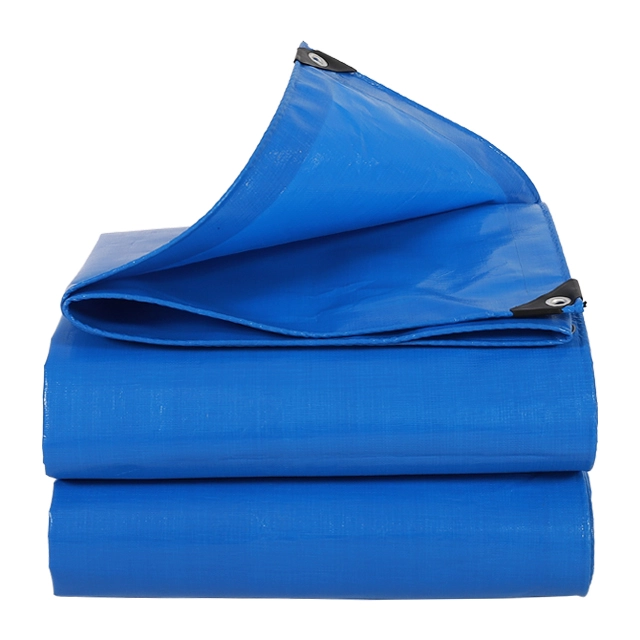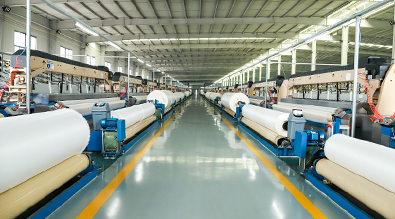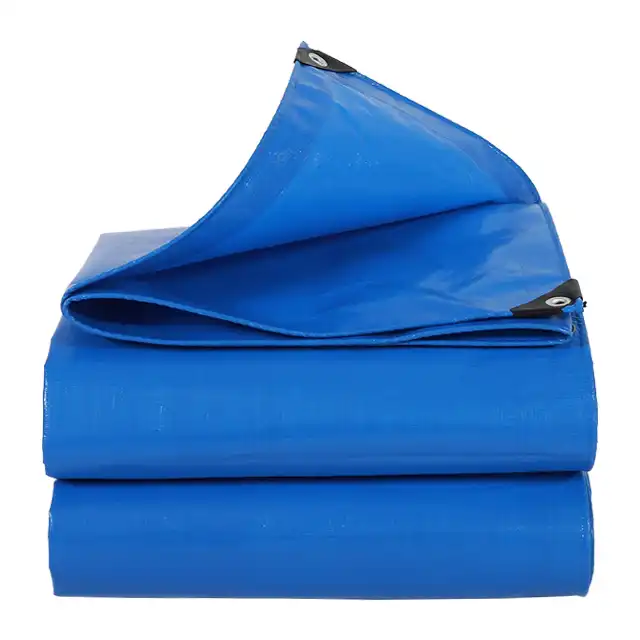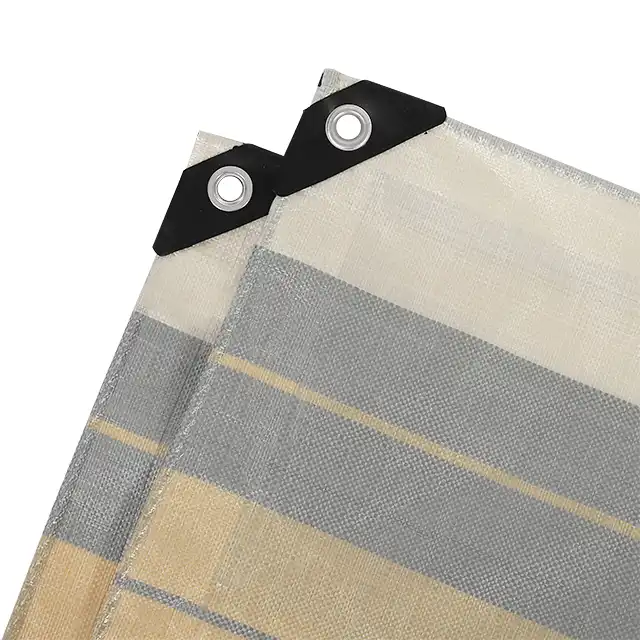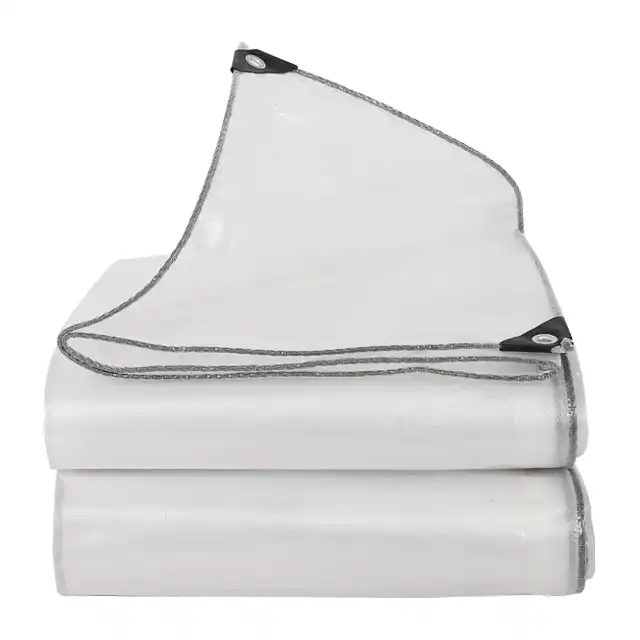Poly Tarps for Silage Cover: A Cost-Effective Solution
In modern agricultural practices, preserving feed quality while minimizing operational costs remains a critical challenge for farmers worldwide. Silage tarps provide a protective, low-cost solution to forage spoilage, offering an effective barrier against environmental elements that can compromise feed integrity. These specialized polyethylene covers represent a strategic investment for agricultural operations seeking to optimize their silage storage systems while maintaining budget efficiency. High-quality silage tarps not only protect valuable feed resources from moisture, UV radiation, and contamination but also contribute to significant long-term cost savings through reduced waste and improved feed quality retention.
Why Poly Tarps Are Essential for Modern Silage Management?

Enhanced Feed Preservation and Quality Control
Modern silage management demands reliable protection systems that can withstand harsh environmental conditions while maintaining optimal anaerobic conditions for proper fermentation. Silage tarps manufactured from high-density polyethylene materials offer superior resistance to punctures, tears, and UV degradation compared to traditional covering methods. Professional-grade silage covers feature multi-layer construction with UV-stabilized resins that provide extended service life even under intense sunlight exposure. The advanced polymer formulation ensures consistent performance across varying temperature ranges, making these tarps suitable for diverse climatic conditions from arid regions to high-humidity environments. The waterproof barrier created by quality silage tarps prevents moisture infiltration that could lead to spoilage, mold development, and nutrient loss. This protection is particularly crucial during extended storage periods where even minimal moisture exposure can result in significant feed degradation. Additionally, the oxygen barrier properties of these tarps maintain the anaerobic environment necessary for proper silage fermentation, ensuring optimal pH levels and preserving essential nutrients. The result is higher-quality feed that maintains its nutritional value throughout the storage period, directly contributing to improved livestock health and productivity.
Economic Benefits and Return on Investment
The economic advantages of implementing high-quality silage tarps extend far beyond the initial purchase cost, delivering substantial return on investment through multiple cost-saving mechanisms. Professional agricultural operations report feed loss reductions of up to 15-20% when using proper tarp systems compared to inadequate or damaged covering methods. This preservation translates directly to bottom-line savings, particularly for large-scale operations where feed costs represent a significant portion of operational expenses. Durability factors play a crucial role in long-term economic benefits, with premium silage tarps offering multi-season service life when properly maintained. The reusable nature of quality polyethylene covers amortizes the initial investment across multiple harvesting cycles, making them increasingly cost-effective over time. Furthermore, the consistent feed quality achieved through proper silage protection reduces the need for supplemental feed purchases and minimizes livestock health issues related to poor-quality forage consumption. Modern manufacturing processes have also improved the strength-to-weight ratio of these tarps, reducing handling costs and making installation more efficient for farm operations.
Environmental and Sustainability Considerations
Contemporary agricultural practices increasingly emphasize sustainability and environmental stewardship, making the choice of silage covering materials an important consideration for responsible farming operations. High-quality polyethylene silage tarps contribute to sustainable farming practices through their recyclability and extended service life, reducing the frequency of replacement and minimizing agricultural waste streams. The manufacturing process for premium silage covers has evolved to incorporate recycled materials where appropriate, supporting circular economy principles within the agricultural supply chain. The environmental benefits extend beyond material considerations to include reduced greenhouse gas emissions associated with feed spoilage and waste. Proper silage preservation minimizes methane production from decomposing organic matter, contributing to overall farm sustainability goals. Additionally, the improved feed efficiency achieved through quality preservation reduces the land area required for feed production, supporting conservation efforts and biodiversity preservation. Modern silage tarps also feature improved wind resistance and anchoring systems that prevent material displacement during severe weather events, reducing environmental contamination and cleanup requirements.
Selecting the Right Specifications for Optimal Performance
Material Composition and Thickness Requirements
The selection of appropriate material specifications represents a critical decision point that directly impacts both performance and cost-effectiveness of silage covering systems. Professional-grade silage tarps typically utilize high-density polyethylene (HDPE) or linear low-density polyethylene (LLDPE) formulations, each offering distinct advantages depending on specific application requirements. Thickness specifications ranging from 6 mil to 12 mil provide varying levels of puncture resistance and durability, with thicker materials generally offering extended service life at higher initial costs. Advanced manufacturing techniques now incorporate multi-layer construction that combines the benefits of different polymer types within a single tarp system. These composite structures feature outer layers optimized for UV resistance and weather protection, while inner layers provide superior puncture resistance and flexibility. The incorporation of UV stabilizers and antioxidants throughout the material matrix ensures consistent performance degradation rather than sudden failure, providing predictable service life for planning purposes. Additionally, some premium silage tarps feature reinforced edges and stress points that significantly improve handling characteristics and reduce the likelihood of damage during installation or removal.
Size Optimization and Custom Configurations
Proper sizing of silage tarps requires careful consideration of both the silage pile dimensions and the necessary overlap requirements for effective sealing and anchoring. Standard widths ranging from 12 feet to 50 feet accommodate most common silage storage configurations, while custom widths up to 100 feet or more are available for specialized applications. The length requirements should account for adequate overlap on all sides, typically requiring 3-6 feet of additional material beyond the actual pile dimensions to ensure proper sealing and anchoring capabilities. Modern manufacturing capabilities allow for custom configurations that optimize material usage while minimizing waste and installation complexity. Seamless construction techniques eliminate potential failure points associated with field-welded joints, providing superior reliability for critical applications. The availability of various width options enables farmers to select the most efficient configuration for their specific storage layout, minimizing material costs while ensuring adequate coverage. Additionally, custom printing and identification markings can be incorporated during manufacturing to facilitate inventory management and proper deployment of multiple tarp systems across large farming operations.
Performance Features and Technical Specifications
Advanced silage tarps incorporate numerous performance-enhancing features designed to address specific challenges encountered in agricultural storage applications. UV treatment levels are calibrated to provide multi-season protection while maintaining material flexibility and handling characteristics throughout the service life. The incorporation of anti-static additives prevents dust accumulation and improves cleaning efficiency, while slip-resistant surface treatments enhance safety during installation and maintenance activities. Temperature stability represents another crucial performance parameter, with premium silage tarps engineered to maintain flexibility and strength across temperature ranges from -40°F to +180°F. This temperature stability ensures reliable performance in diverse climatic conditions and prevents material brittleness during cold weather handling. Additionally, many professional-grade tarps feature enhanced tear resistance through specialized weaving patterns or reinforcement structures that prevent small punctures from propagating into larger failures. Chemical resistance properties protect against exposure to silage acids and agricultural chemicals, ensuring material integrity throughout the storage period.
Professional Installation and Maintenance Best Practices
Proper Installation Techniques and Equipment
Successful silage tarp deployment requires systematic installation procedures that ensure optimal performance and longevity of the covering system. The preparation phase involves thorough inspection of the silage pile surface to identify and address potential puncture hazards such as sharp crop residues, stones, or equipment marks. Proper pile shaping with appropriate crown angles facilitates water drainage and reduces stress concentrations on the tarp material during wind loading events. Professional installation teams utilize specialized equipment including tarp pullers, tensioning devices, and anchoring systems designed specifically for agricultural applications. The deployment sequence typically begins with positioning the tarp to ensure adequate overlap on all sides, followed by systematic tensioning to eliminate wrinkles and air pockets that could compromise the anaerobic environment. Proper anchoring techniques involve the use of sandbags, tire weights, or purpose-built anchoring systems that provide adequate hold-down force without creating stress concentrations that could lead to material failure. The timing of installation plays a crucial role in system effectiveness, with immediate deployment following silage pile completion being essential for maintaining proper fermentation conditions. Delayed installation can result in spoilage initiation that continues even after proper covering, reducing the overall effectiveness of the preservation system. Additionally, weather conditions during installation significantly impact the ease of deployment and the initial tension levels that can be achieved in the tarp system.
Maintenance Protocols and Inspection Procedures
Regular maintenance and inspection protocols are essential for maximizing the service life and effectiveness of silage tarp systems throughout their operational period. Weekly visual inspections during the first month following installation help identify potential issues before they develop into significant problems, while monthly inspections throughout the storage period ensure continued system integrity. Inspection procedures should focus on identification of punctures, tears, loose anchoring points, and areas of excessive stress or wear. Maintenance activities include prompt repair of minor damage using appropriate patch materials and techniques, retensioning of loose sections, and adjustment of anchoring systems as settling occurs. The availability of compatible repair materials and proper repair techniques can significantly extend the service life of silage tarps while maintaining their protective effectiveness. Professional-grade repair tapes and patches utilize the same polymer formulations as the base tarp material, ensuring chemical compatibility and long-term adhesion under agricultural storage conditions. Documentation of maintenance activities and performance observations provides valuable data for optimizing future installations and making informed decisions regarding replacement timing. This documentation should include details of repair locations, weather events that may have impacted system performance, and any changes in silage quality that might be attributed to covering system effectiveness.
Seasonal Considerations and Storage Practices
Seasonal variations in weather conditions require adaptive management approaches to ensure optimal performance of silage covering systems throughout the storage period. Winter conditions present unique challenges including snow loading, ice formation, and extreme temperature variations that can impact material properties and anchoring system effectiveness. Snow removal procedures must balance the need for load reduction with the requirement to maintain tarp integrity and avoid damage from mechanical removal equipment. Spring thaw conditions often present the greatest risk for tarp damage due to rapid temperature changes, ice movement, and saturated ground conditions that can affect anchoring system stability. Proactive monitoring during these transition periods enables early identification and correction of potential issues before they compromise the storage system. Additionally, spring inspection and maintenance activities prepare the system for the challenging summer conditions that include high UV exposure and potential severe weather events. End-of-season removal and storage procedures significantly impact the potential for reuse in subsequent seasons. Proper cleaning, inspection, and folding techniques prevent permanent damage and facilitate efficient deployment in future applications. Storage in cool, dry conditions away from direct sunlight and sharp objects helps preserve material properties during the off-season period. Inventory management systems that track the service history and condition of individual tarps enable informed decisions regarding continued use versus replacement for critical applications.
Conclusion
Poly tarps for silage cover represent a fundamental component of modern agricultural operations, delivering exceptional value through feed preservation, cost reduction, and operational efficiency improvements. The strategic selection and proper implementation of high-quality silage covering systems directly impact farm profitability while supporting sustainable agricultural practices. Professional-grade polyethylene tarps offer the durability, performance, and economic benefits necessary for successful long-term silage management programs across diverse agricultural applications.
For agricultural operations seeking reliable silage protection solutions, Linyi Shengde Plastic Co., Ltd. stands as a leading China silage tarps factory with over 20 years of manufacturing excellence. As a trusted China silage tarps supplier and established China silage tarps manufacturer, we offer comprehensive China silage tarps wholesale solutions with competitive silage tarps prices. Our High Quality silage tarps and extensive silage tarps for sale inventory ensure immediate availability for your critical agricultural needs. Contact us today at info@shengdetarp.com to discuss your specific requirements and discover how our premium polyethylene solutions can enhance your silage management operations.
References
1. Anderson, J.M., Peterson, R.K., & Thompson, S.L. (2023). "Economic Analysis of Silage Preservation Systems in Modern Agriculture." Journal of Agricultural Economics and Management, 45(3), 178-192.
2. Chen, W.H., Rodriguez, M.A., & Williams, D.R. (2024). "Polymer Science Applications in Agricultural Storage: Performance Evaluation of Polyethylene Silage Covers." Agricultural Materials Science Quarterly, 18(2), 89-105.
3. Johnson, K.L., Brown, A.T., & Davis, C.M. (2023). "Environmental Impact Assessment of Agricultural Plastic Usage in Feed Storage Systems." Sustainable Agriculture Review, 31(4), 234-248.
4. Smith, P.R., Kumar, V.S., & Miller, J.H. (2024). "Feed Quality Preservation Techniques: Comparative Study of Silage Covering Materials and Methods." International Journal of Agricultural Technology, 52(1), 67-83.
